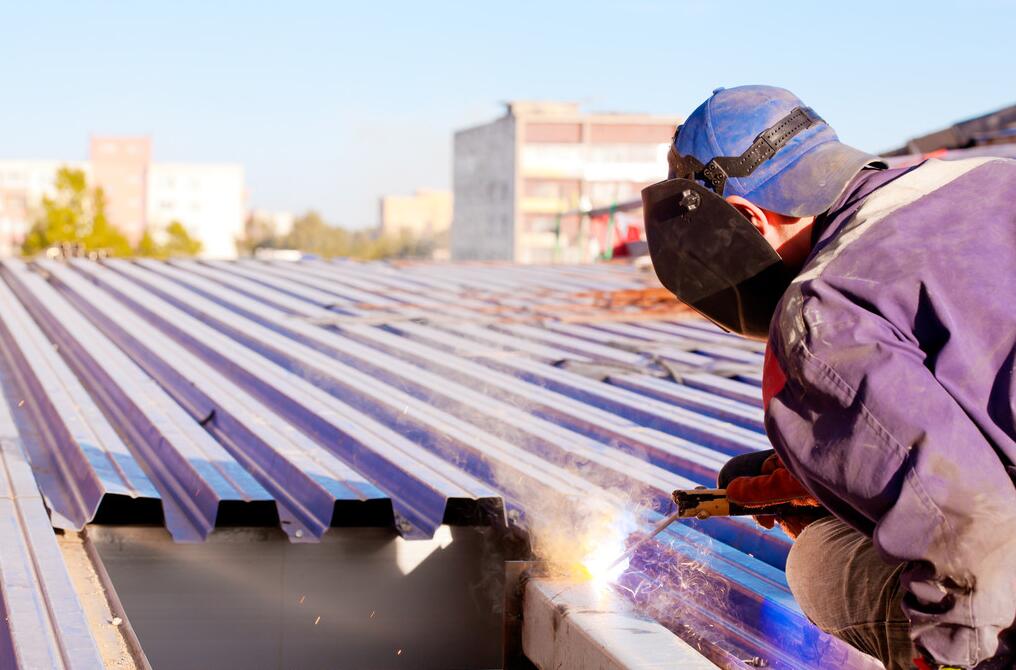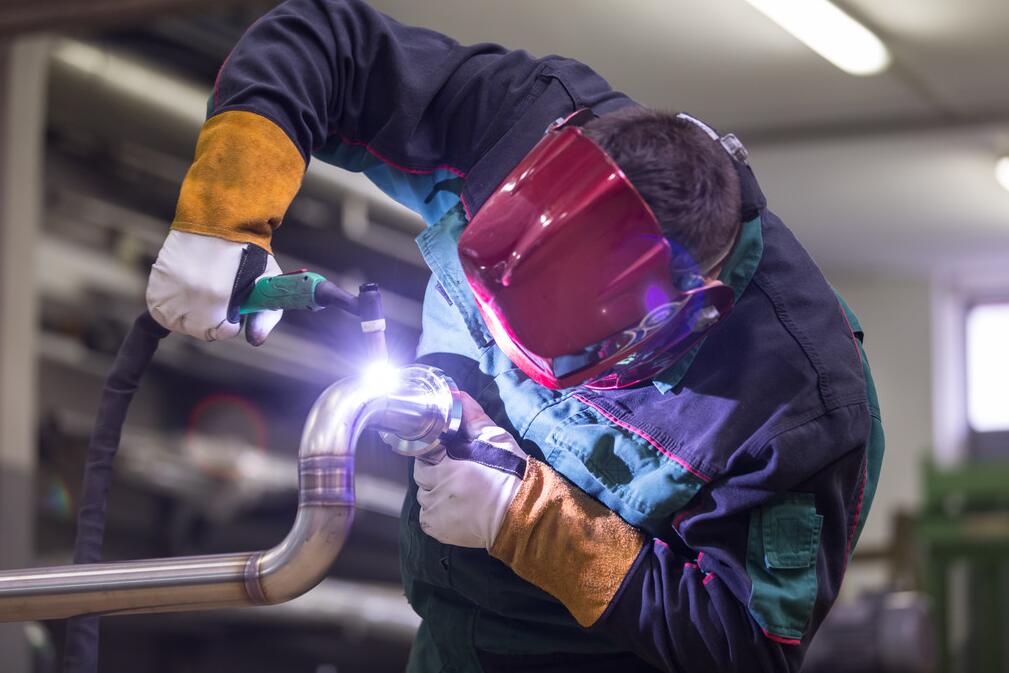Current Situation and Development Trend of Magnesium Alloy Welding
 Apr 14, 2022|
Apr 14, 2022| View:359
View:359
1. Gas Tungsten Arc Welding (TIG)
Gas tungsten arc welding (TIG) is currently the most commonly used welding method for magnesium alloys. Because magnesium alloys are easily oxidized, TIG arc welding magnesium alloys usually uses the cathode cleaning effect of alternating current to remove the oxide film, and DC TIG welding magnesium alloys is rarely used. However, compared with DC, the heat input of AC TIG welding is lower, coupled with the rapid thermal conductivity of magnesium alloys, and the shallow weld penetration, so that there are certain problems in AC TIG welding of magnesium alloy thick plates. Therefore, multi-layer multi-pass welding or double-sided welding is required when welding magnesium alloy medium and thick plates, which increases the difficulty of welding and reduces production efficiency.
The main defects of argon arc welding of magnesium alloys are pores and looseness. By increasing the flow rate of the shielding gas during the welding process, the number and volume of pores can be significantly reduced, and the loss of magnesium content in the weld can be reduced, thereby improving the mechanical properties of the joint. In addition, for the prevention and control of blowholes, the arc can also be lowered as much as possible (about 2mm) during welding, so as to give full play to the cathode crushing effect of the arc and stir the molten pool, so that the gas escapes from the molten pool.
2. Laser Welding
Laser welding of magnesium alloys is an efficient and precise processing method using a high-energy-density laser beam as a heat source for welding. Location, welding speed, penetration,
type of shielding gas and filler material.
The laser weldability of 6 cast magnesium alloys and 4 extruded magnesium alloys was studied by Nd: YAG laser and CO2 laser. It was found that the thickness of magnesium alloys with the
same composition and different compositions, from 2 to 8 mm, can be welded by laser, and can get very narrow weld and great penetration.
The defects of laser welded magnesium alloys are mainly pores, heat-affected zone hot cracks and solidification cracks. In addition, the high reflectivity of magnesium alloys to laser is also a
problem that needs to be paid attention to in the laser welding of magnesium alloys, which makes the laser welding of magnesium alloys shallower. In contrast, electron beam welding achieves
the highest penetration and far exceeds that of laser welding.

3. Electron beam welding
The electron beam can penetrate through the magnesium alloy plate of 30mm, and the structure of the melting zone is almost equiaxed with about 10mm. Electron beam welding can avoid many
welding defects, such as holes, undercuts, root depressions and a wide heat affected zone. After process optimization, such as adjusting the focus position to the root, optimizing welding parameters,
etc., the ultimate tensile strength of the weld can reach 83% (with surface stress concentration) and 96% (without stress concentration) of the base metal.
Electron beam welding is usually vacuum welding, and the volatilization of metal gas will greatly pollute the vacuum chamber. The study found that the non-vacuum electron beam is very suitable for
the welding of magnesium alloys. AZ31 wrought magnesium alloy and AM50A and AZ91D cast magnesium alloy can get good joints under proper welding process. The relatively high energy density
allows welding speeds of up to 15m/min, resulting in less heat input and high welding efficiency. Welds without defects such as porosity, shrinkage and pores can be obtained by filling wires. The static
load of the joint can be comparable to that of the base metal, and the corrosion resistance of the joint is even better than that of the base metal. High-speed, high-efficiency, and highly automated
non-vacuum electron beam welding provides a new approach for large-area applications of magnesium alloys.
4. Resistance spot welding
Resistance spot welding has become the most important welding method in the automotive industry because of its extremely low cost and stable process. Magnesium alloy has high thermal conductivity
and small resistance value. When resistance spot welding magnesium alloy, it needs to pass a high current in a short time, so that the heat generation rate is much higher than the heat dissipation rate.
This performance is similar to that of aluminum alloys, so spot welding equipment that can weld aluminum alloys can also weld magnesium alloys. The cost of a welding machine is proportional to the
transformer secondary coil current load. Under the same plate thickness, the electric current required for resistance spot welding of steel is much smaller than that of magnesium alloy, so the welding
equipment of magnesium alloy is expensive. Welding current, welding time and electrode pressure are the three most important parameters for resistance spot welding of magnesium alloys. These three
parameters can effectively control the nugget size and joint strength. Aluminum alloys have high thermal conductivity and electrical conductivity, and the required welding current is 2 to 3 times that of steel.
The nugget growth of magnesium alloys is divided into three stages: inoculation, growth and stabilization. In the first cycle, the nugget is complete and begins to grow. As the nugget grows, the conduction
channel increases and the current density decreases; the electrode-plate contact area increases, and the heat dissipation increases. These two points lead to a gradual slowing of the growth rate. When the
heat generation and heat dissipation reach a balance, the nugget tends to be stable. Similar to magnesium, aluminum alloys have a very short incubation time and melt almost in the first cycle; steel does not
begin to melt until the fifth cycle. The simulated structure shows that the contact resistance of the bonding surface is the main reason for this difference. The difference in temperature distribution along the radial
direction is also one of the reasons. Steel is flatter than aluminum and magnesium, so aluminum and magnesium generate more heat, which is conducive to the formation of nuggets.
Magnesium alloy spot welded joints are usually divided into four regions: base metal, heat affected zone, plastic ring and nugget. Recrystallization and grain growth occur in the heat-affected zone. Similar to
aluminum alloys, the heat affected zone of magnesium alloy welding is also prone to wild flower cracks. The plastic ring is located at the contact surface of the heat affected zone, which is a unique area of resistance
spot welding. Due to the high temperature and high pressure (electrode pressure) in this region, dynamic recrystallization often occurs at the plastic ring. There are usually two types of nuggets: columnar dendrites
and equiaxed crystals.






